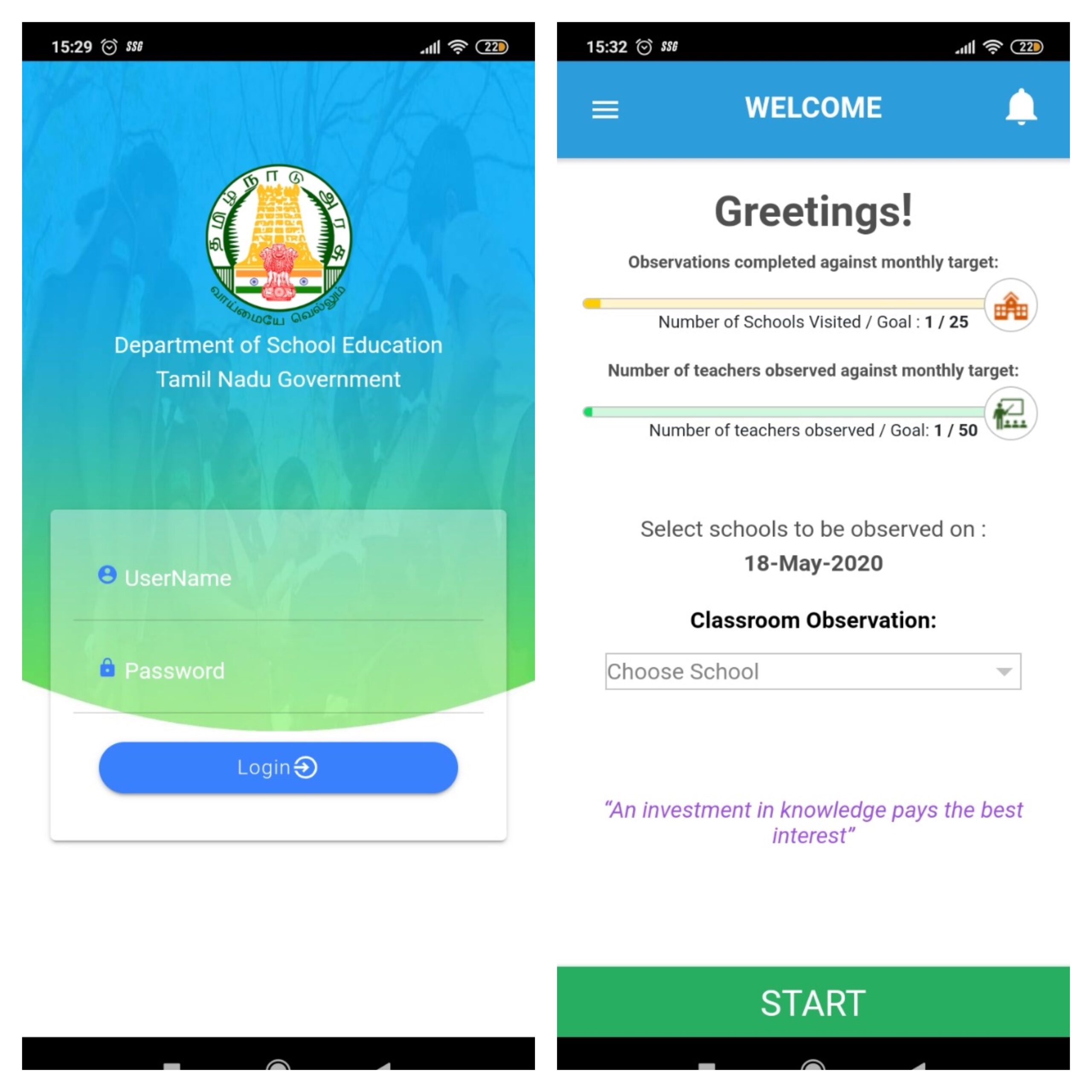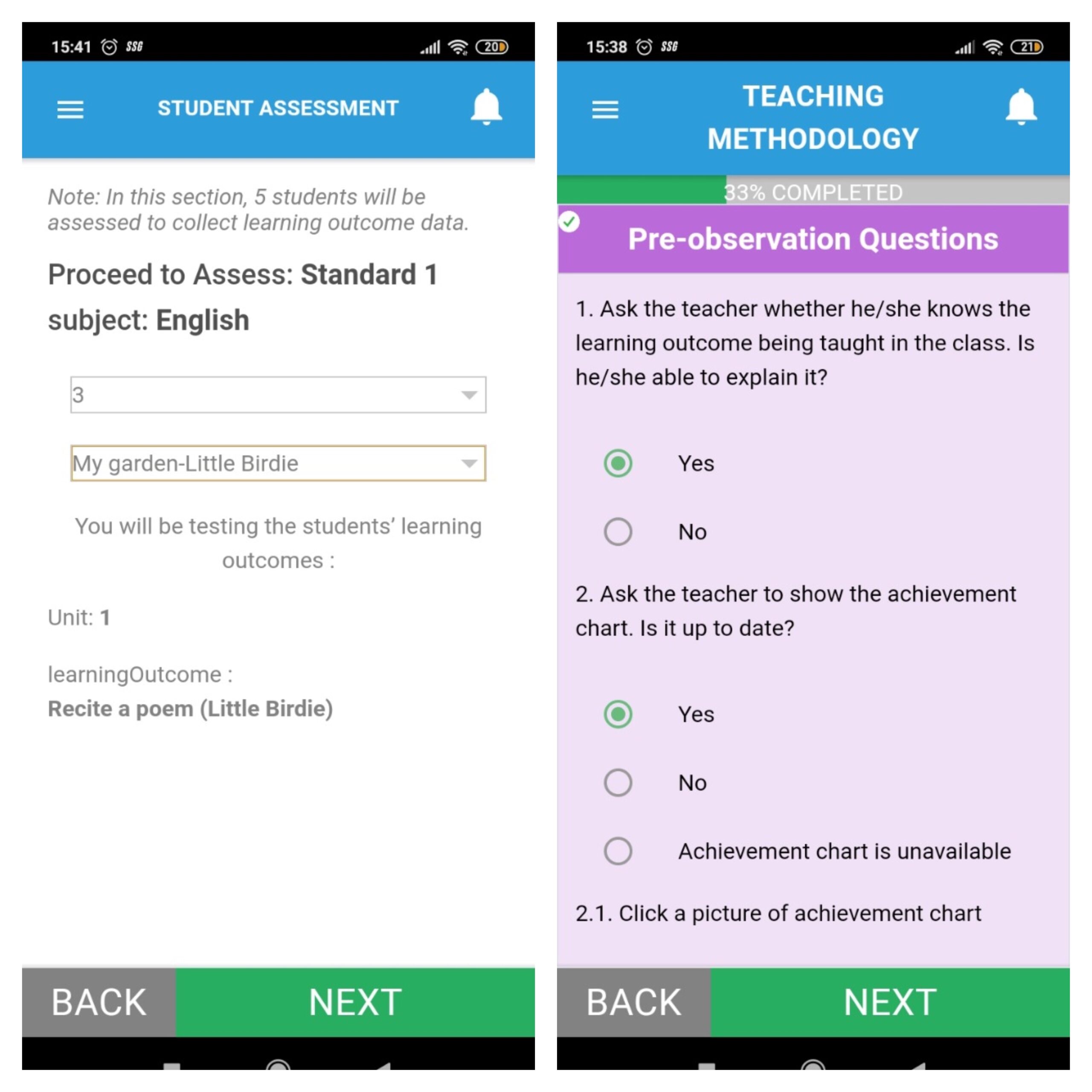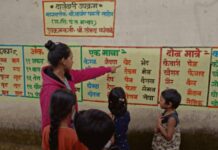You are required to put together a detailed teacher training strategy plan for the upcoming academic year. The plan should cater to the professional development needs of all 5.7 Lakh teachers in the state [1]; your primary objective is to decide what topics to prioritize for face-to-face training versus digital training. Due to significant time and budgetary constraints, you have been told that you can only cover 30% of the overall training scope in the face-to-face training to be held at the beginning of the year. The rest must be delivered locally or digitally to teachers, throughout the year. Therefore, the topics covered in the face-to-face training sessions should be delivered in the subsequent monthly-cluster-wide teacher training sessions too, in a customized manner according to the needs of the cluster and teachers.
How will you go about putting such a training plan together? What basic information would you need and where will you begin to find that information? What information will you need over the course of the year and how will it affect the training strategy? How will you monitor progress to achieve academic goals?
✺
Similar conundrums face bureaucrats at all levels of the administrative value chain. In the course of our work at Madhi, we have observed that administrators try their best to solve these problems when it comes to teacher training with the data available to them. However, this data is not always as accurate or as complete as they need it to be (and as it could be). This isn’t ideal: in the age of technology, it is our imperative to have conversations around and build systems which strengthen administrators’ abilities to make evidence based decisions—aka, Data for Governance.
In the first two parts of this series, we talked about the necessity of strong in-service support for teachers, as part of their Continuous Professional Development (CPD) offered by the state. In particular, we highlighted the need to identify achievable personalised professional goals for teachers for their professional development, to be supported by a sustainable and realistic classroom-observation based feedback loop.
However, beyond these ideas, how can we realistically best leverage data on the education system such that the in-service CPD support provided to teachers actually augments Student Learning Outcomes (SLOs) in public schools?

There are means and methods by which a state can gather the required data to make evidence-based policy decisions, such as the example noted above. In particular, a starting point is delving deeper into the data for governance practices required to move away from the current one-size-fits-all approach to public systems planning—which is especially prevalent in teacher training.
A State Level Examination of a Systems Level Transformation
In every system, there are data collectors whose role it is to support last mile procedural adherence. Classroom observers—who are known as Block Resource Teacher Educators (BRTEs) in Tamil Nadu—perform this function in the education system. They are expected to observe classroom activities and interactions, assess student performance, and support the teacher to improve their classroom instructional practice—all of which will hopefully lead to strong student learning outcomes.
However, even as recently as five years ago, BRTEs in Tamil Nadu conducted their observations in an analogue manner. Data was usually collected in notebooks or files, while records were maintained at the school or block-level. This data was not aggregated making it difficult to collate block or cluster-level classroom data and share it with policy makers at the state-level.
Revisiting our teacher training agenda example, this meant that in the past, state policy makers who planned the annual teacher-training agenda for all of Tamil Nadu’s 5.7 lakh teachers usually relied on classroom observation notes from only a few BRTEs; collected in an analogue manner. The responses usually ended up being disproportionately skewed from BRTEs from Chennai (the urban state capital) with relatively fewer inputs from BRTEs from the rest of Tamil Nadu. Consequently, the training and professional development needs of teachers teaching in rural areas were often missed out.
Such a scenario has profound implications. At the basic level, the data with which decisions are made is inaccurate. For example, approximately 70% of classrooms in Chennai are monograde—that is, when children of a single grade-level sit in a single classroom—as opposed to almost 70% multigrade classrooms in rural Tamil Nadu. A multigrade classroom is one where children of more than one grade sit together and are taught by a single teacher, who must cater to at least three different ability levels at the same time. Based on the data available to them, if state bureaucrats assume that the large majority of classrooms are monograde, the textbooks, teacher guides, and other training materials are then designed keeping this need in mind.
At a deeper level, this means that the vast majority of Tamil Nadu’s teachers are poorly prepared for the realities of their classrooms, leaving children with poorer-quality teaching. Consequently, they achieve poorer learning outcomes. Needless to say, this also means that the support the BRTEs can provide the teachers with in order to improve classroom instructional practice also diminishes.
Good quality and expansive data is therefore essential to ensure that bureaucrats plan for systemic realities. Over the last five years, various states have begun the move from analogue to digital data collection, adopting various models of data collation, analysis, and decision making. Tamil Nadu is one such state.
Tamil Nadu Vagupparai Nokkin: An Exercise in Data Governance for Education
In order to build a strong data-driven governance system, it is critical to first ensure and plan for the functional components, as they will set the contextual foundation for the products which must be accordingly built. 
Tamil Nadu has been at the forefront of this activity on the national stage; not least due to the state leadership team’s role in the ideation of Tamil Nadu Vagupparai Nokkin (TNVN), but also, in their sustained efforts to bring their ideas to life. Supported by the Madhi Foundation and other strategic partners such as the Central Square Foundation and CISCO, the Department of School Education piloted the first version of TNVN in 2019—the application has undergone multiple iterations thus far, with v3.1 of TNVN ready to go live once schools reopen in the new academic year.
As of today, TNVN is a bilingual, Android application which can also work offline. The data captured from the application updates real-time onto a dashboard, which allows all the respective stakeholders (from the state to district to block to cluster to school levels) to access relevant data to make policy decisions.
A snapshot of the outcomes achieved post the very first term after TNVN’s second launch highlight the benefits of stronger data governance mechanisms. There was a 44% increase in lesson plans used by teachers in Tiruvannamalai district alone, while a 14% increase in teachers accessing digital QR code support to strengthen classroom instructional practices was recorded across the state. A 9% increase in teacher mastery in English literacy quizzes taken on the Tamil Nadu Teacher Training Portal [2][3]. This data was obtained from the classroom observations conducted using the custom-built TNVN mobile application.

Teachers themselves seem to be satisfied with the platform and the data available to them. “When the BRTE shares the details of the observation through the application, I am able to understand my areas of strength and development,” says Asha*, a public-school teacher. “I can also see what teaching-learning practices I must adopt in my classroom to improve student learning outcomes.”
Two years ago, the introduction of termly review meetings at the state and district levels was also groundbreaking—data was able to transform systems-level thinking for last mile strategic planning and field-level practices. Says BRTE Allavudeen*, “in the review meeting, we were able to see aggregated block level data highlighting areas of strength and development for individual blocks and across districts. We were also able to collectively discuss best practices to achieve [better] outcomes.” BRTEs seem to specifically find the app useful when observing the successes and failures of the larger education system. “I have seen lots of things change from before and after the observation app usage,” says Nagesh, a BRTE. “We convey what went well in a classroom and what could be improved upon, based on the app’s recommendations. By being able to ensure that the teacher follows the necessary pedagogic process [through the app], we have seen student attainment improve.”

The department has also built a visionary roadmap for the future of TNVN and the allied, systemic functional practices required to make it accessible and useful to teachers. This has been designed based on feedback from administrative and academic stakeholders who have experienced using the application and the data output. Stakeholders have suggested upgrades to the data collection system and requested an integrated dashboard (which can highlight correlative/causal data from the last mile by integrating classroom observation data with student performance data and teacher learning outcome data).
Above all, the app’s data-driven insights seem to inspire teachers to perform better be it in classes, or data collection. Says Jyothi*, a headmistress at a public school, “Even if we forget [to collect data points], the app clearly lays out the next step through the ordering of its questions, thereby motivating us to do better. As higher officials have immediate access to the data from the app, we receive appreciation regularly and are motivated to improve.” Nagesh adds, “I have witnessed an improvement in the usage of Teaching Learning Materials (TLMs) directly on the field. Based on the observation report, the teachers are motivated to access online professional development material on their own—through the Tamil Nadu Teacher Platform (TNTP) or Digital Infrastructure for Knowledge Sharing (DIKSHA)—to improve their rating through the app.
In a post-TNVN world, the policy maker who has to plan the annual teacher training strategy now has data about which pedagogic practices teachers struggle with, and how to break up the teacher training batches to make content for each one more targeted. Furthermore, the planning team has access to cluster-specific teacher and student outcome data which can be used to support teacher training strategies at the cluster level and to ensure that regular follow ups can happen at state, district, block, and cluster levels. Best of all, state policy makers can compare and contrast data from seemingly similar clusters or blocks to begin diving deeper into the root causes of poor student learning outcomes in any given geography.
Opportunities in Policy Design for Data Driven Decision Making
Technological advances have brought about a revolution in evidence-based decision making in industries ranging from sports to music to business. Historically, strategic decision making in these areas has been heavily influenced by factors other than data, including personal experience, anecdotal evidence, instinct, hype, and dogma or belief systems. The ability to collect, dissect, and analyze large amounts of data, however, allows decision makers to cut through personal biases and discover what really works. Indeed, those sectors who have made the best use of data have consistently outperformed their more data-challenged peers.
The idea that the public sector should base its decisions on data is not new. What’s new is the opportunity created by information technologies. In a paper-based world, the costs and administrative burden associated with data collection and analysis were simply too steep. Today, however, these costs have fallen dramatically due to advances in information technologies. The development and democratization of data visualisation tools empowers users with functional and sectoral expertise to extract insights from the gathered data, especially when the data inputs are accurate and meaningfully related to the expected outcomes. The true value of data driven decision-making lies in sustained usage and evidence-based action.

Given the context of Tamil Nadu’s journey from TNVN v.1. to TNVN v.3+, here are some points for practitioners to consider when building data for governance systems:
- A prerequisite to building the functions and products of a data for governance system is an architecturally and technologically strong information management system; in particular one which can accommodate iterative data mapping requirements (at scale).
- Data norming or the universalisation of assessment or observation mechanisms is necessary at the outset to ensure that the data inputs are comparable. Training the relevant stakeholders at regular frequencies is necessary to ensure that norming is consistent and sustainable.
- Digital literacy training must be contextualised for all the relevant stakeholders. Training should also include the thought processes and potential constraints involved in designing data systems, as this can help stakeholders provide meaningful insights and inputs during focus group discussions and feedback sessions.
- It is essential to build functional expertise within the state Project Management Unit (PMU) teams and build systems that understand reactions to and outcomes for data for governance systems on the ground. Without this, the system will be unable to solve problems at the last mile.
- Before building systems and products, consider conducting a pilot (in multiple contexts, that is, urban, rural, etc.). Pilots help identify what systems work and which need iteration before scale. As a practitioner, a pilot is also essential when building the utility case for public sector officials to invest in large scale data-for-governance systems.
Data-driven decision making empowers us to focus on our biggest problems, efficiently and equitably allocate resources, and design policies that are appropriately targeted and produce desired results. The 2020 National Education Policy (NEP) advocates for effective resourcing and governance for schools, with the objective of “monitoring achievement of learning outcomes in the country, promoting collaboration between the school boards, and becoming an instrument for sharing of best practices between school boards.”
To do any of the above, the stakeholders in the system need to first gather accurate classroom data in a manner that can be easily analysed. Only then can we identify and share the best practices that work. Some states have already begun charting that vision into reality—let the momentum gained sweep across the nation so that education practitioners can learn from the data shared about what worked and what didn’t!
For more on how to reform India’s education system, curated by The Bastion and the Madhi Foundation under ‘The Five Tenets of Education Reform’, click here.
*Names changed. | Featured image: school children in Kanchipuram district, Tamil Nadu; courtesy of McKay Savage (CC BY 2.0).
[1] Approximation of the number of public school teachers in Tamil Nadu.
[2] Second Term-End Report: Pilot Project for TNVN and TNTP.
[3] Third Term-End Report: Pilot Project for TNVN and TNTP.







[…] implementation stages such as through launching blended teacher training processes, creating customised data dashboards for governance, and […]
What an amazing blog! This gives a lot a clarity regarding the various subjects. If you want to end your curiosity regarding your children’s basic concepts understanding, please check out the My Guru Class site given below. It will help your kids with their foundations and give them a fair reasoning to prepare for the various competitive exams!